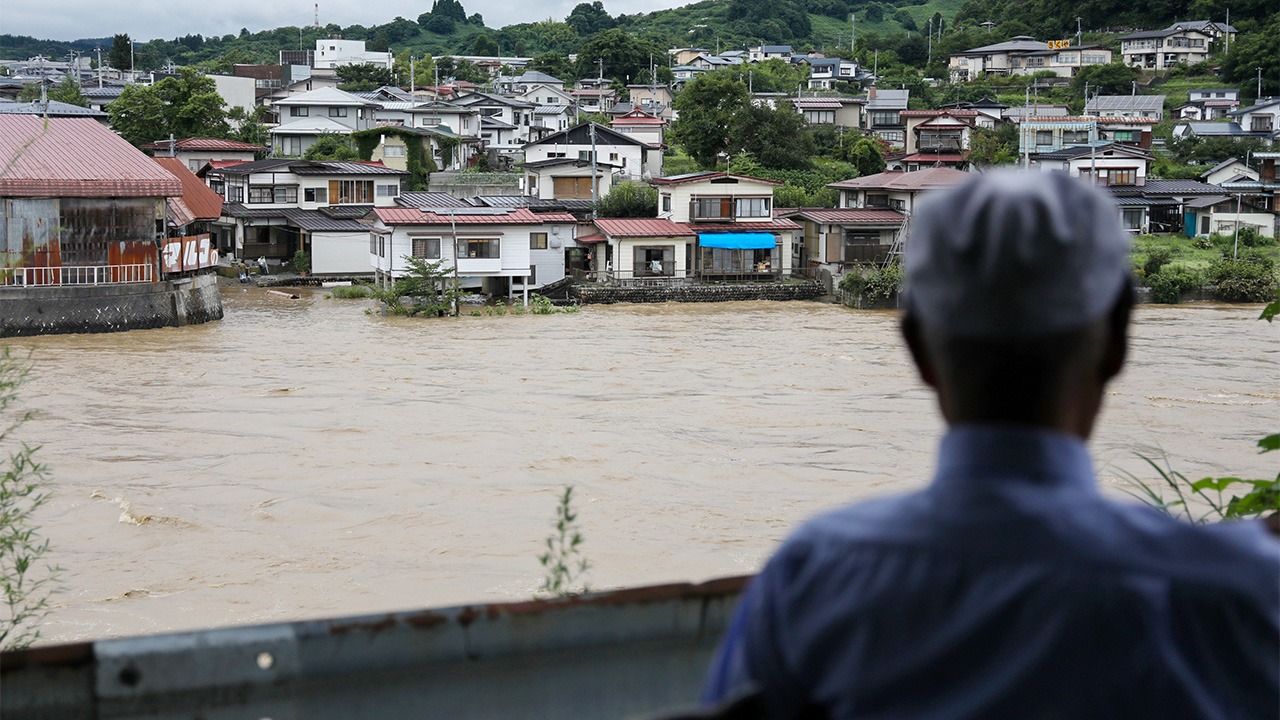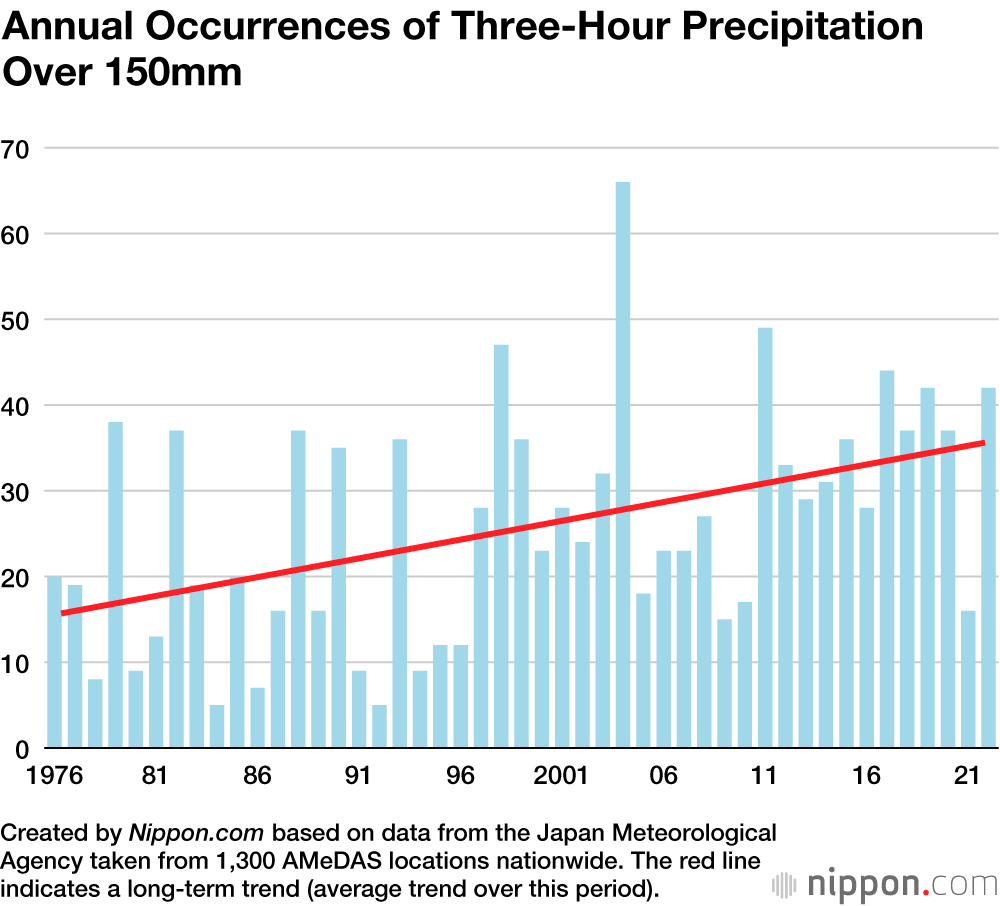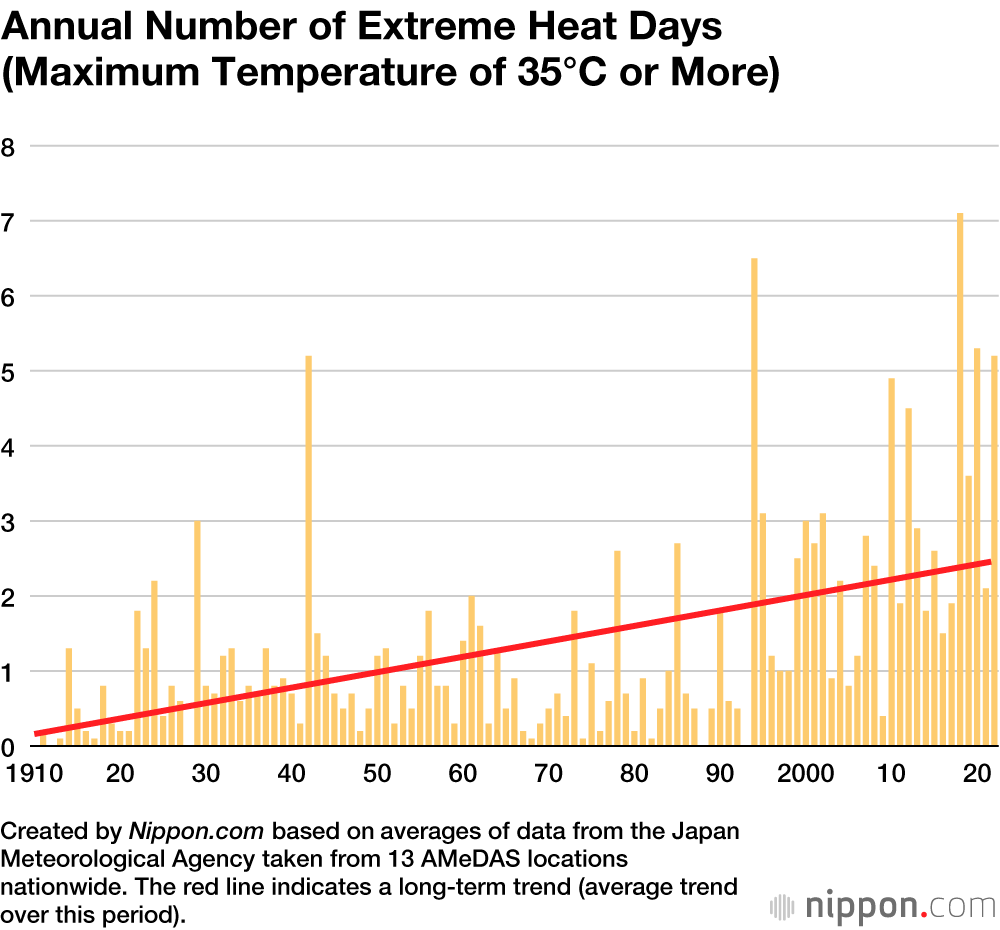
Heavy Downpours Nearly Doubled in Japan in the Last 40 Years
Environment Society- English
- 日本語
- 简体字
- 繁體字
- Français
- Español
- العربية
- Русский
The Japan Meteorological Agency recently published data for 2022 connected with changes in heavy rainfall and extremely hot days. This shows that the average frequency of heavy rainfall over the last decade is almost twice that for the period around 1980.
The JMA aggregated and analyzed the number of days with heavy rainfall between 1976 and 2022. This included days on which hourly precipitation had exceeded 80 millimeters, three-hourly precipitation had exceeded 150 millimeters, and daily rainfall had surpassed 300 millimeters. The JMA suggested that the increase may be due to global warming.
According to data taken from 1,300 AMeDAS ground observation network locations across Japan, there was an average of 34 annual occurrences of three-hourly precipitation of 150 millimeters or more in the most recent 10 years (2013–2022). This was an almost 1.8-fold increase compared to the first decade that statistical data was taken (1976–1985), where it averaged 19.
The annual frequency of hourly precipitation that exceeded 100 millimeters increased approximately 2.0 times and the annual number of days that saw daily rainfall of more than 400 millimeters increased 1.9-fold.
Records of the number of “extreme heat days” (with a maximum daily temperature of 35°C or more) at 13 locations across Japan, where the impact of urbanization has been relatively low and there have been long-term observations, showed an average over the most recent 30 years (1993–2022) of 2.7 days. Compared to the first 30 years of statistical data (1910–1939) with 0.8 days on average, this was a 3.5-fold increase.
Over the most recent 30 years from 1993 to 2022, the average annual number of “midsummer days” (with a daily maximum temperature of 30°C or more) measured at the 13 locations was approximately 42 days. This was a 1.2-fold increase compared to the first 30 years (1910–1939), when the average was 35 days.
(Translated from Japanese. Banner photo: Mogami River, swollen by heavy rain, in Sagae, Yamagata Prefecture, on August 4, 2022. © Jiji.)

